History exhibition room 1
Update date: March 15, 2018
History Exhibition Room 1 displays historical materials from Inagi's primitive ancient times to the Edo period.
| Exhibition theme | era etc. | Exhibition Contents | |
|---|---|---|---|
| 1 | The historical stage of Inagi | Terrain and natural environment | Overview of Inagi's topography and natural environment |
| 2 | Culture in red clay | paleolithic age | Paleolithic ruins and culture, excavated stone tools |
| 3 | People who lived in the Tama Hills | Jomon Period | Jomon period ruins and culture, earthenware and stone tools |
| 4 | Expansion of rice cultivation culture | Yayoi and Kofun period | Yayoi period ruins and culture, side cave tombs, etc. |
| 5 | Musashi Kokubunji and Kawarayato kiln ruins | Nara and Heian Periods | Musashi Kokubunji and Kawarayato kiln ruins |
| 6 | Engishikinaisha and ancient Buddhist statues | Heian period | Inagi's Engishikinaisha Shrine and ancient Buddhist statues |
| 7 | The activities of samurai and medieval mountain castles | Kamakura/Muromachi period | The activities of samurai and medieval mountain castles in the city |
| 8 | Faith and culture of medieval Inagi | Kamakura/Muromachi period | Distribution of stone tablets and medieval religious sites |
| 9 | The Edo Shogunate and the Villages of Inagi | Edo Period | Inagi Rokukamura during the Edo period |
| 10 | Daimaru Canal and New Rice Field Development | Edo Period | Daimaru Canal Water and New Field Development in the Edo Period |
| 11 | Development of early modern regional culture | Edo Period | Edo period paintings, pottery, Buddhist statues, stone Buddhas, etc. |
| 12 | Political situation in the late Edo period | Edo Period | Maintaining order in villages, political situation, etc. |
History exhibition room 1
Primitive/Ancient Inagi
The historical stage of Inagi
The topography of Inagi is said to have been
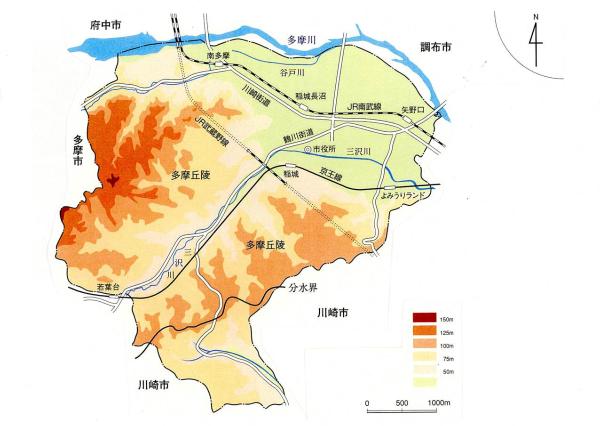
Topography of Inagi
From the Paleolithic period to the Jomon period
The museum exhibits pottery, stone tools, and other tools found during excavations at the ruins, and provides an introduction to how the people who lived in Inagi lived. The remains of the tools and houses used by primitive people can sometimes be found in the soil, allowing us to see what life was like at that time.

Earthenware from the Jomon period (Tama New Town No.471 Ruins)
Life in the Jomon period (provided by Tokyo Metropolitan Buried Culture Center)
From the Yayoi period to the Kofun period
During the Yayoi period, rice cultivation became widespread.

Earthenware from the Yayoi period
Ruins of houses from the Kofun period
From the Nara period to the Heian period
During the Nara period, the Inagi area
In addition, Buddhist culture spread to the countryside,
Large model of tile kiln
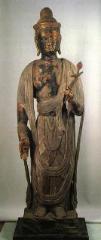
Koshoji Temple Wooden standing statue of Kannon Bodhisattva
medieval inagi
Samurai activities and Yamashiro
During the Kamakura period, many

Distant view of Ozawa Castle ruins
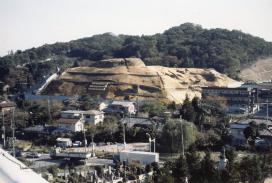
Excavated ruins of Omaru Castle
Tablet monuments and religious ruins
A stone structure representative of the Middle Ages

Myokakuji-no-Itabi (Myokakuji no Itabi)
Copper coins excavated from Nyujozuka in Hirao
Inagi in the Edo period
Inagi Rokuka Village situation
During the Edo period, the Inagi region was divided into six villages.
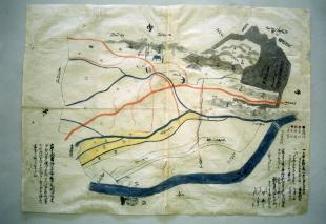
Map of Daimaru Village
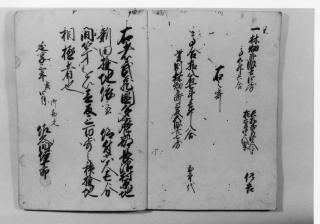
Naganuma village land survey book
Daimaru Canal and New Rice Field Development

Daimaru water canal
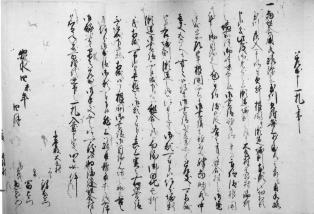
Old documents related to the construction of Daimaru Canal Water
Regional culture of the Edo period
We will look at the local culture through paintings, pottery, Buddhist statues, and stonework made during the Edo period.
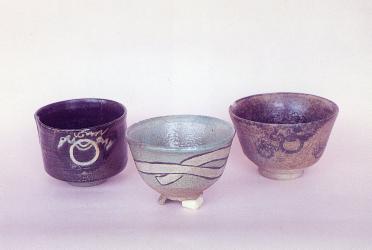
Tamagawa ware tea bowl
Model of Koshin Tower from the Edo period
Inquiries regarding this page
Inagi City Education Department Lifelong Learning Division
2111 Higashi-Naganuma, Inagi-shi, Tokyo
Phone: 042-377-2121 Fax: 042-379-0491







